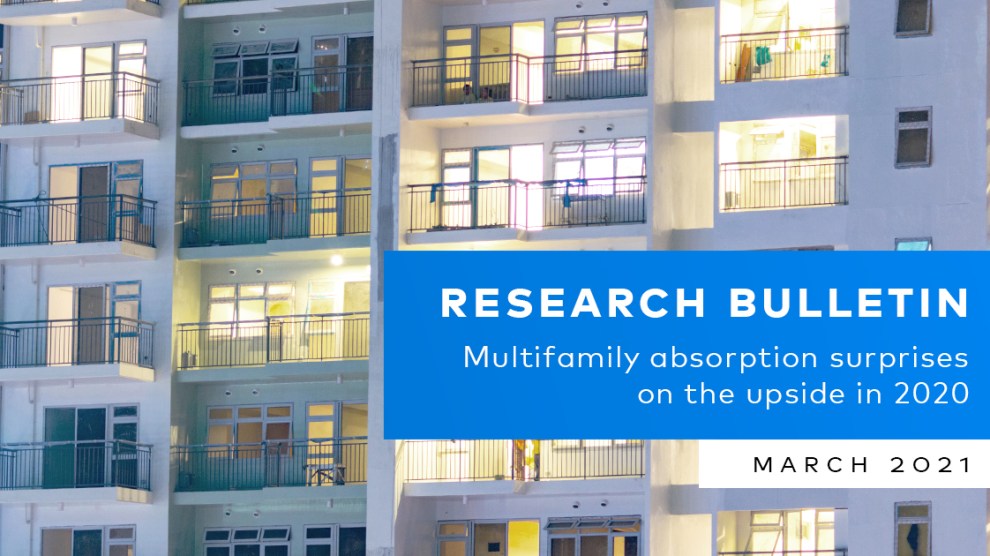Despite a pandemic that restricted many routine activities and a recession that left millions jobless, demand for multifamily properties was unexpectedly positive in most parts of the country in 2020. Some 252,000 apartment units, or 1.7% of total stock, were absorbed in the U.S. in 2020, according to a review of Yardi Matrix’s database.
The number of units absorbed in 2020 was only 12.0% less than the 286,300 units absorbed the prior year, and not too far off the average during the last cycle. Considering the economic and social calamity that befell the U.S., in many respects due to COVID-19, the fact that demand held up as well as it did is a relief for the apartment industry.
The positive multifamily absorption—which counts the net change in occupied units—was broadly distributed. Net absorption was in the black in 25 of the 30 largest metros, led by Dallas, Atlanta, Denver and Phoenix. Those top 25 metros accounted for 158,300 units absorbed, more than 60% of total U.S. net absorption.
Negative absorption was mostly limited to a handful of large markets, with the worst performance in the Bay Area and New York City, which combined for -22,100 units absorbed in 2020. By metro size, high-cost gateway metros had the worst performance, with net absorption of -0.3% (-7,600 units). Demand was much better in secondary (154,100 units, or 2.3% of total stock) and tertiary (96,200 units, or 2.0% of stock) markets.
On a regional level, renters continued to flock to the Southeast (96,700 units absorbed, or 2.4% of total stock), the Southwest (56,800 units, 2.1% of stock) and the West (57,100 units, 1.9% of stock). Meanwhile, demand was slightly positive in the Midwest (27,100 units, 1.1% of stock) and the Northeast (4,900 units, 0.2% of stock).
Read the full Matrix Bulletin-Absorption Paper-March 2021











Add Comment